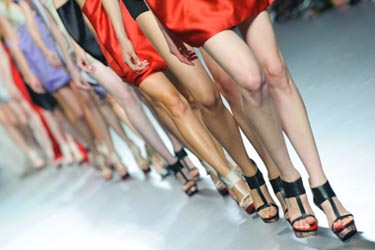New York Likely to Offer Labor Protections for Child Models
New York has been on the forefront of some of the most cutting-edge labor movements, but when it comes to child models, New York is behind more than 20 states that include child models in their state labor codes. That may soon change.

Kate Moss was only 14 when she was discovered by a model management company at JFK Airport in New York City. At the time, there were no child labor laws to protect her in New York.
That was in 1988. The same is still true in New York today—though that is likely to change soon.
New York City is the fashion capital of the world, and thousands of girls and young women flock to the city to pursue their dreams of becoming models. New York’s labor code does not yet include protections for child models—a policy gap that is noteworthy for an industry in which young women often endure sexual abuse, harassment, and unpaid wages. New York has been on the forefront of some of the most cutting-edge labor movements, but when it comes to child models, New York is behind more than 20 states, including Alabama, Missouri, North Carolina, and Texas, that include child models in their state labor codes.
The Model Alliance, a non-profit dedicated to protecting and improving working conditions for models, identified this policy gap and has been educating state policymakers about it. As a result, earlier this month, the New York legislature passed its first ever child model law, adding “print and runway models” to the list of child performers protected by New York Department of Labor regulations. Democratic Gov. Andrew Cuomo is expected to sign the law, which requires designers who hire print and runway models under the age of 18 to put a portion of the model’s earnings into a trust. The law will also require designers to hire chaperones and tutors for young models on set, which could help create safer working conditions.
Anna Durrett, a spokesperson for the two key sponsors of the child model law, state Sens. Jeffery Klein (D-Bronx) and Diane Savino (D-Staten Island), told Rewire there just hadn’t been any awareness around this issue until the Model Alliance came along. “It was just a question of organizing,” Durrett said. “There wasn’t anyone like the Model Alliance around to galvanize people around this.”
Last September, Model Alliance Founder and Director Sara Ziff testified at the New York State Department of Labor about working conditions and risks child models face, as well as the exclusion of child models from labor protections. (She is also a model who, like Moss, began her career at 14.) Ziff then started a petition addressed to Gov. Cuomo making the case that child models should be included in labor regulations, and she wrote an editorial about the issue for the New York Times.
Among other things, Ziff’s advocacy informed New York legislators that the hiring of child models has actually long been governed by the New York Department of Education (DOE), not the Department of Labor, and there were no teeth to the DOE regulations.
“It just makes no sense,” Ziff said. “There’s no enforcement power at the DOE. Even though child models are required to have work permits, these permits look like they were drafted in 1960s, and to be honest, I’ve never actually seen one.”
In 2011, the fashion industry employed 165,000 people, generated $1.7 billion in tax revenue, and brought in $55 billion in sales. Young girls are a crucial piece of this industry. In addition to being mostly female, the majority of child models begin working between the ages of 13 and 16.
According to Ziff, actually including child model regulations within the Department of Labor is a significant step forward for these girls. BuzzFeed’s Amy Odell pointed out soon after the legislature’s vote that “The law is expected to affect female models more than male models, who tend to start their careers a little older.”
There are many reasons child models should be protected by the labor code, including the frequency of harassment and abuse models experience. A white paper released this year by the New York Senate Independent Democratic Conference found:
Approximately 30% of female print and runway models have experienced inappropriate touching while modeling. Another 28% experienced pressure to engage in sexual intercourse at the workplace during their career. Greater than three-quarters of models (77%) admitted to being exposed to alcohol and drugs while working. These numbers are extremely alarming. This is only amplified when one considers that a mere 29% of models experiencing some form of abuse were comfortable with reporting it to the agency representing them.
After the Model Alliance put enough spotlight on these working conditions as well as the policy exclusion, Sen. Klein contacted Ziff and began working on child model protections for the New York labor code.
“It wasn’t without effort, but [the New York legislators] really came to us,” Ziff said.
